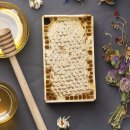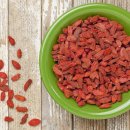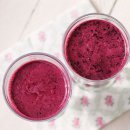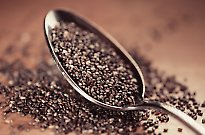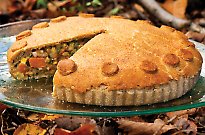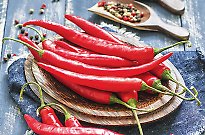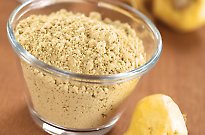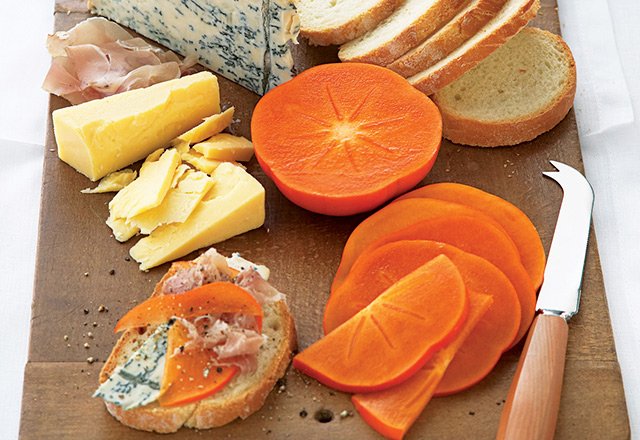
Autumn's golden fruit: persimmons
Autumn's golden fruit: persimmons

Anyone unfamiliar with persimmons could mistake their glossy orange profile for an under-ripe tomato. But beneath their ambiguous exterior is subtly sweet flesh that’s perfect for baking, in salads and as a fresh and colourful accompaniment to cheese platters (you bring the wine?). Australia produces approximately 2500 tonnes of persimmons annually (around one per cent of global production) with the majority being grown in temperate Queensland and coastal NSW.
There are two major types of persimmon: original (astringent) and sweet (non-astringent).
Original persimmons are large, heart-shaped fruits, ranging in colour from pale orange to deep red-orange. The original persimmon has been grown for decades in Australia, most commonly as a decorative tree in home gardens. Unlike their sweet cousins, original persimmons need to be harvested once fully mature and are ready for eating when the flesh is soft, jelly-like and very sweet. If eaten firm they will ‘suck your mouth dry’ with their astringency – which is not a pleasant experience. Commercial production of this variety is now confined to regions around Sydney (i.e. along the Nepean River) with a lot of the production going into the farmers’ markets in Sydney.
Sweet persimmons, also known as the fuyu fruit, are round with a slightly flattened top that holds their green stem (calyx). They range in colour from pale orange to a deep red-orange. Sweet persimmons can be eaten when crisp and crunchy or when soft depending on consumer preference, and their peel is edible. Introduced to Australia in the late 1970s, the sweet persimmon now equates for greater than 90 per cent of production and are available in supermarkets and all good fruit stores.
NUTRITION
Aside from its aesthetic and gustatory qualities, persimmons also boast a pretty impressive nutritional profile. A sweet persimmon contains twice the dietary fibre of an apple and has higher levels of many minerals and antioxidants. Persimmons are a good source of vitamin C – which promotes skin health and immunity – and beta-carotene, a rich source of vitamin A and a very powerful antioxidant. Vitamin A is known to promote skin, eye and dental health.
HOW TO PICK
Sweet persimmons are at their best when crisp and crunchy like an apple. Choose sweet persimmons that are free from bruises, firm and still have green, semi-pliable caps. The fruit can range in colour from a pale orange to a deep red-orange, depending upon variety and stage of the season. Despite being firm to the touch, handle persimmons with care as the thin skin is delicate and bruises easily. Surface blemishes are fine and do not affect the flavour and eating quality.
HOW TO PREPARE
There are two ways to cut persimmons – the ‘apple’ method or the ‘star’ method. Depending upon how you like to enjoy your persimmons, follow the steps below:
Apple method: Take a sharp utility knife and cut around the stem of the persimmon at a 45-degree angle and discard the centre. Then cut the persimmon in halves and then quarters and enjoy like an apple.
Star method: Take a sharp utility knife and hold the persimmon on its side. Cut slices of desired thickness, discard persimmon stem and serve.
HOW TO STORE
Persimmons should be kept out of the fridge for up to five days and eaten fresh. Sweet persimmons that have gone soft are perfect for use in cooking – but they must be handled gently. They are also delicious eaten fresh with yoghurt or ice cream as dessert.
WHEN CAN I GET THEM?
Persimmons are in season from late February to mid June (Autumn–Winter).

